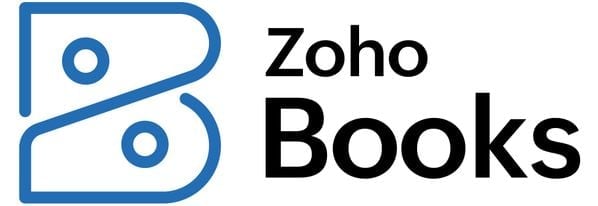Double-Entry Accounting: What It Is and Why It Matters
The double-entry system protects your small business against costly accounting errors.

Many, or all, of the products featured on this page are from our advertising partners who compensate us when you take certain actions on our website or click to take an action on their website. However, this does not influence our evaluations. Our opinions are our own. Here is a list of our partners and here's how we make money.
Double-entry accounting is a bookkeeping system that requires two entries — one debit and one credit — for every transaction. Your books are balanced when debits and credits zero each other out. Unlike single-entry accounting, which focuses on tracking revenue and expenses, double-entry accounting also tracks assets, liabilities and equity.
The accounting system might sound like double the work, but it paints a more complete picture of how money is moving through your business. And nowadays, accounting software manages a large portion of the process behind the scenes.
What is double-entry accounting?
Double-entry accounting describes how a bookkeeper records a business’s transactions: Every transaction produces a debit in one account and a credit in the other. Together, they represent money flowing into and out of your business.
Credits increase revenue, liabilities and equity accounts, whereas debits increase asset and expense accounts. Debits are recorded on the left side of the general ledger and credits are recorded on the right. The sum of every debit and its corresponding credit should always be zero.

How do debits and credits work with double-entry accounting?
Here’s a breakdown of how debits and credits affect each account:
| Account type | Debit | Credit |
|---|---|---|
| Assets | ⬆ | ⬇ |
| Expenses | ⬆ | ⬇ |
| Revenue | ⬇ | ⬆ |
| Liabilities | ⬇ | ⬆ |
| Equity | ⬇ | ⬆ |
This equation is at the heart of double-entry accounting:
Assets = Liabilities + Equity.
Liabilities and equity affect assets and vice versa, so as one side of the equation changes, the other side does, too. This helps explain why a single business transaction affects two accounts (and requires two entries) as opposed to just one.
For example, when you take out a business loan, you increase (credit) your liabilities account because you’ll need to pay your lender back in the future. You simultaneously increase (debit) your cash assets because you have more cash to spend in the present.

What’s the difference between single-entry and double-entry accounting?
Unlike double-entry accounting, single-entry accounting doesn’t balance debits and credits. Instead, each transaction affects just one account and results in only one entry (as opposed to two). The method focuses mainly on income and expenses and doesn’t take equity, assets and liabilities into account the same way that double-entry accounting does.
Here are some other main differences between single-entry and double-entry accounting:
| Single-entry accounting | Double-entry accounting | |
|---|---|---|
| Tracking | Tracks revenue and expenses. | Tracks assets, liabilities, equity, revenue and expenses. |
| Entries | One entry per transaction. | Two entries per transaction. |
| Accounting errors | Prone to mistakes. | Reduces accounting errors. |
| Process | Can be handwritten or maintained in a spreadsheet. | Should be used with accounting software. |
| Insight | Can’t produce much insight beyond a profit and loss statement. | Can provide valuable insight into a company’s financial health. |
| Best for | Sole proprietors, freelancers and service-based businesses with very little assets, inventory or liabilities. | All small businesses with significant assets, liabilities or inventory. |
Single-entry accounting example
Single-entry accounting is like keeping a cash book. Entries generally include a date, description, amount and remaining balance. Let’s say you paid rent and received a loan from the bank in June 2023. You started out the month with $50,000 in your business bank account. Here’s how the entries might look:
| Date | Description | Revenue | Expenses | Balance |
|---|---|---|---|---|
| 6/1/23 | Starting balance | $50,000 | ||
| 6/2/23 | Received bank loan | $20,000 | $70,000 | |
| 6/15/23 | Paid rent | $3,000 | $67,000 |
It looks like your business is $17,000 ahead of where it started, but that doesn’t tell the whole story. You also have $20,000 in liabilities, which you’ll have to pay back to the bank with interest. This is why single-entry accounting isn’t sufficient for most businesses.
Double-entry accounting example
You’re in the same situation as above, but using a double-entry accounting system instead of single-entry. Here’s what it might look like:
| Date | Description | Account | Debit | Credit |
|---|---|---|---|---|
| 6/2/23 | Received bank loan | Cash (assets account) | $20,000 | |
| Loans payable (liabilities account) | $20,000 | |||
| 6/15/23 | Paid rent | Rent (liabilities account) | $3,000 | |
| Cash (assets account) | $3,000 |
Now, you can look back and see that the bank loan created $20,000 in liabilities. It’s also apparent that rent money came from your cash account. Money flowing through your business has a clear source and destination.
Double-entry accounting software
Most modern accounting software, like QuickBooks Online, Xero and FreshBooks, is based on the double-entry accounting system. When you enter your transactions into the software — typically using a form that looks like a check, invoice or bill — the second part of the transaction automatically happens behind the scenes as part of the software’s programming.
If you’re not sure whether your accounting system is double-entry, a good rule of thumb is to look for a balance sheet. If you can produce a balance sheet from your accounting software without having to input anything other than the date for the report, you are using a double-entry accounting system.
Here are NerdWallet’s top picks for double-entry accounting software for small businesses:
| Accounting software | Pricing | Best for |
|---|---|---|
 | $30 per month and up. | Overall accounting software. |
 | $15 per month and up. | Unlimited users. |
 | Free and up. | Mobile-first features. |
 | $19 per month and up. | Freelancer-friendly features. (Least expensive plan does not include double-entry accounting reports.) |
| Free. | Free, unlimited invoicing. | |
 | $1,481 per year and up. | Industry-specific features. |
Frequently Asked Questions
What is an example of double-entry accounting?
In a double-entry accounting system, every transaction impacts two separate accounts. For example, let’s say your business pays a $300 utilities bill. In that case, you’d debit your liabilities account $300 and credit your cash account $300.
What’s the difference between single-entry and double-entry accounting?
Whereas single-entry accounting focuses mainly on income and expenses, double-entry accounting also factors in liabilities, assets and equity to give you a more complete overview of your business’s financial standing.
Article sources
NerdWallet writers are subject matter authorities who use primary,
trustworthy sources to inform their work, including peer-reviewed
studies, government websites, academic research and interviews with
industry experts. All content is fact-checked for accuracy, timeliness
and relevance. You can learn more about NerdWallet's high
standards for journalism by reading our
editorial guidelines.
Bonus offer
More like this
Related articles








